NanoPhotometer N120 Mobile
Microvolume high throughput champion
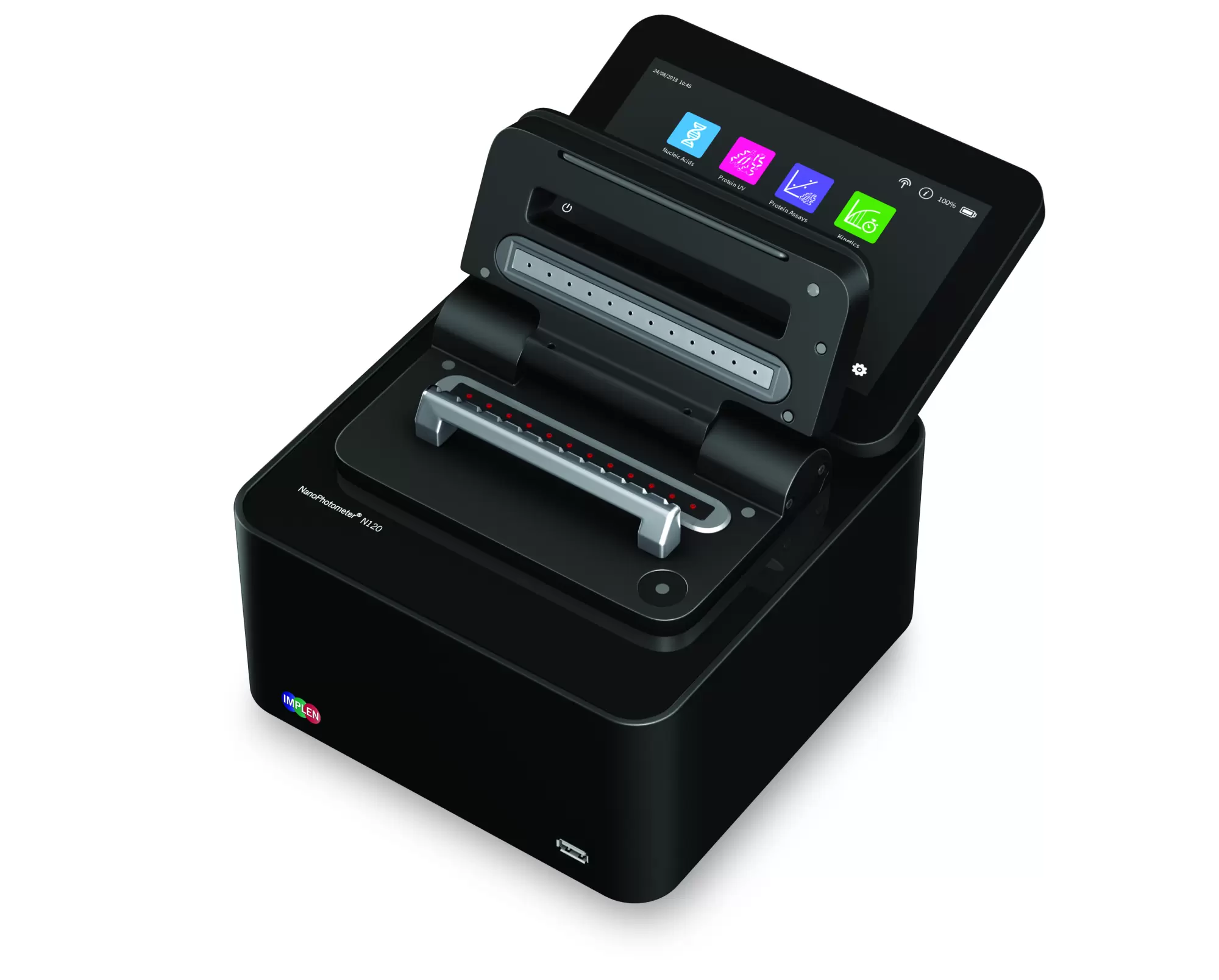
Product Description
With full scan capability range from 200 - 900 nm for rapid and complete analysis of 12 samples in parallel in as little as 1.7 seconds per sample, the NanoPhotometer® N120 record breaking design will exceed expectations.
Reliably analyze up to 12 samples per run over a wide concentration range (2 to 8.000 ng/µl for dsDNA). Measure 96 samples up to 126 times faster with 33% less operational steps required compared to other scanning measurement methods like e.g. microplate readers.
In addition to saving hands-on time with the one step Auto Sample Feature, you attain detailed trustworthy information for each sample – including full high resolution scan results along with accurate determination of 260/280 and 260/230 ratios. Blank ControlTM and Sample ControlTM monitor the entire measurement process and will highlight readings that are not within expected purity range.
Patented Sample Compression and True Path TechnologyTM with guaranteed fixed path lengths allow for unmatched accuracy and precision; independent from surface tension. Lifetime accuracy is guaranteed without any maintenance being required.
Easy Sample Application
The NanoPhotometer N120 features Implen's unique and proprietary 12 Point TechnologyTM, which consist of several positioning guides for single and multi-channel pipettes.
Patented illuminated sample windows and an animated sample processing grid ensures convenient and error free sample application. The design is compatible with various multi-channel pipettes and supports the user while positioning the tips on the sample windows.
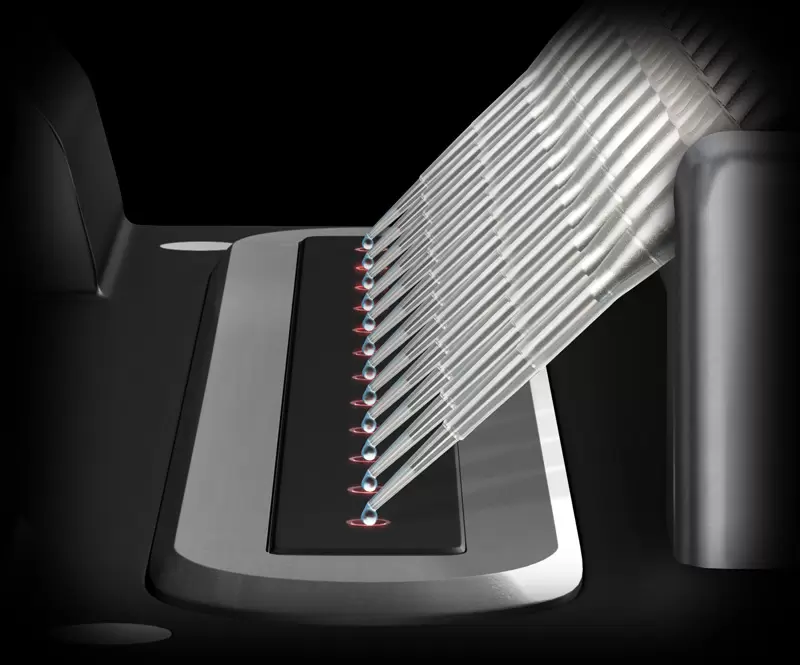
Sample Compression and True Path TechnologyTM
The patented True Path TechnologyTM covers the complete extensive dynamic range with two precisely defined path lengths. The sealed mechanical setup has two fixed anchor points, which are not changing over the lifetime of the instrument. No calibration or maintenance is necessary. Lifetime accuracy is guaranteed.
Blank and Sample ControlTM - Certainty in Real Time
Sample ControlTM, the leading edge quality control technology to identify air bubbles, sample impurities, turbidity, lint residues or potential contaminations, monitors handling characteristics and sample quality in real time to ensure, that the measured concentrations are reproducible and most precise.
Blanks with high background or residues from previous users are the main cause for inaccurate readings. Blank ControlTM will protect you from wasting time and precious sample on inaccurate readings caused by high background blanks or inappropriate cleaning.
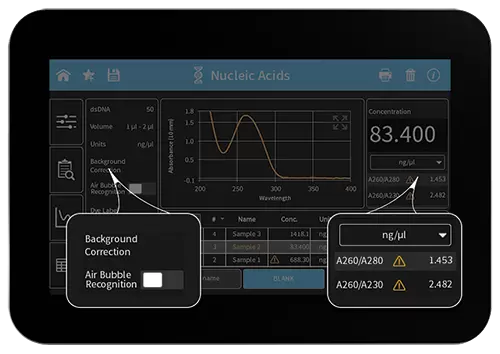
Convenient, Easy and Flexible Stand-Alone Operation
Save valuable bench space. An integrated computer with an Intel Celeron dual core 2.4 GHz processor and 128 GB of SSD data storage eliminates the need for a dedicated external computer. The ultra compact (20x20x12 cm) all-in-one design including a 7'' glove compatible touch display significantly reduces the benchtop footprint of the device.
The N120 Mobile version even comes with a built-in battery package (for up to 3 hours) for completely location independent operation. Multi-sample spectroscopy can now be taken under a laminar flow hood/clean bench, shared between labs, or be executed out into the field.
NPOS Operating System: intuitive graphical interfaces (GUI) providing one-step method access, pre-programmed and customizable applications based on the ultimate level of data security. Import and export of sample IDs from Excel files is available for fast and automated sample mapping.
Preprogrammed applications are available for nucleic acid quantitation and purity check (dsDNA, ssDNA, RNA, mRNA, Oligos including dye-labeled samples), small molecules in organic solvents, kinetics in a drop and more.
Control your NanoPhotometer via touchscreen/tablet/computer. Equipped with WiFi, USB A/B, and LAN interface connections. Front USB flash drive port for quick and easy data transfer. Define and store your own data and methods and retrieve them through the NanoPhotometer Network Drive. Optional connection and control via LIMS are also available.
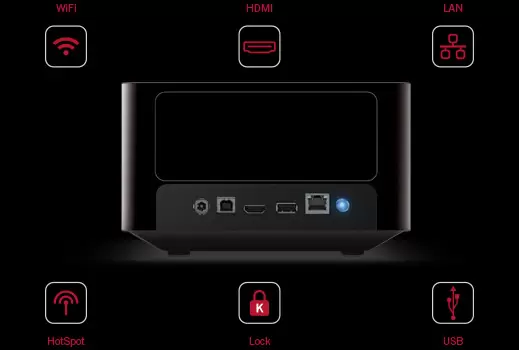
Clean with Confidence
Smooth quartz glass surfaces provide straightforward cleaning. Feel confident your instrument is always clean with integrated warnings that alert users of dirty sample surfaces, fingerprints or lint. A simple swipe with a KimWipe makes sample cleaning a breeze.
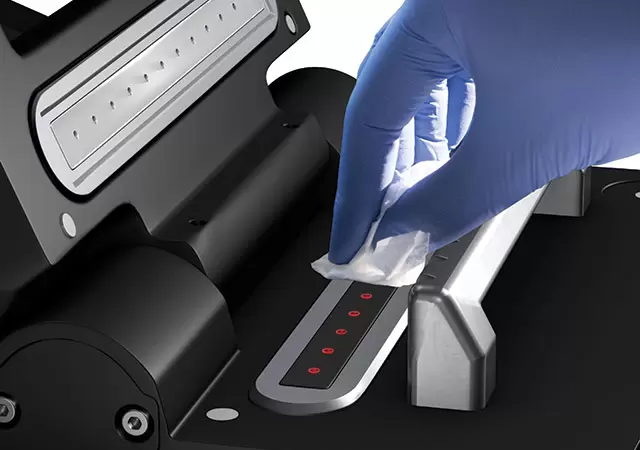
Universal Data Output
Every NanoPhotometer is able to generate formatted Excel and PDF document files for data processing or archiving of measurements on the lab network.
The capability to print full page reports, even in different selectable languages, labels and cryo labels via USB and through a network connection lends users the upmost flexibility for data output.
Supported printers include AirPrint/IPP compatible printers supporting PDF format, printers with HP universal printer driver capability and DYMO label printers.
Limitless Spectroscopy Applications
Nucleic Acids - The Nucleic Acids Method provides one-step easy analysis allowing quantitation and purity check of dsDNA, ssDNA, RNA, mRNA, miRNA as well as Oligonucleotides. In this method, it is also possible to determine the dye concentration and frequency of dye incorporation for dye conjugated nucleic acids. For each measurement, the concentration calculated as well as the 260:230 and 260:280 purity ratios. In addition to a full scan graph, a full table with raw data points is provided.
Proteins - The Protein UV Method allows for protein quantitation and purity check (BSA, Antibodies, IgG, IgE, Serum Albumin, etc.) using direct A280 measurements. In this method is also possible to select from pre-programmed dye labels as well as to create custom dye methods to determine the degree of labeling of dye conjugated proteins. For each measurement results can be provided as an OD1 value or the concentration can be calculated based on the extinction coefficient for the selected protein at 280 nm. In addition to a full scan graph, a full table with raw data points is also provided.
Protein Assays - In the protein assays method it is possible to quantify proteins using colorimetric assays including the BCA, Bradford, Lowry, and Biuret assays.
Kinetics - The Kinetics Methods allows for the measurement of change in absorbance as a function of time at a fixed wavelength in a drop or in a cuvette. Kinetic studies are routinely used for a variety of applications including the enzymatic determination of compounds in food, beverage, and clinical laboratories. Absorbance (An) for each measurement point, delta A (difference between start and last absorbance), slope, and correlation coefficient (calculated from linear regression of the data points) are displayed.
OD600 Cell Density - The OD600 Method is used to determine the absorbance at 600 nm. Bacterial cell cultures are routinely grown until the absorbance at 600 nm (known as OD600; default setting) reaches approximately 0.4 prior to induction or harvesting. A linear relationship exists between cell number (density) and OD 600 up to approx. 0.6.
Wavelength - The Wavelength Method allows for measurement of simple absorbance (Abs) or transmission (%T) at a single user defined wavelength. The results window shows the amount of light passed through the sample relative to the reference.
Wavescan - The Wavescan Method records the absorption (Abs) or transmission (%T) spectrum for the range between two user defined wavelengths. The spectral plot allows simple identification of peak height and position. The curve interpretation of the entire spectrum provides most detailed information for a sample.1
Absorbance Ratio - The absorbance Ratio Method can be used to measure the ratio between two user defined wavelengths.
Concentration - The Concentration Method determines the concentration of samples from a single wavelength absorbance reading. The amount of light that has passed through a sample relative to a reference is multiplied by a factor to obtain the concentration. The factor may be a known figure, or may be calculated by the instrument by measuring a standard of known concentration.
Standard Curve - The Standard Curve Method can be utilized to generate a standard curve at a single user specified wavelength. The preparation of a multi-point calibration curve from standards of known concentration to quantify unknown samples is a fundamental use of a spectrophotometer; the NanoPhotomer® has the advantage of being able to store this curve as a method to be recalled for future experiments.
Custom Apps - Fully customizable application development is possible with the proprietary NanoPhotometer® Operating System. Please contact Implen team for more information about custom app design to meet your individual application needs.
NanoPhotometer N120 Video
- Catalog Number
N120-Mobile-IMP - Supplier
Implen - Size
- Shipping
RT

